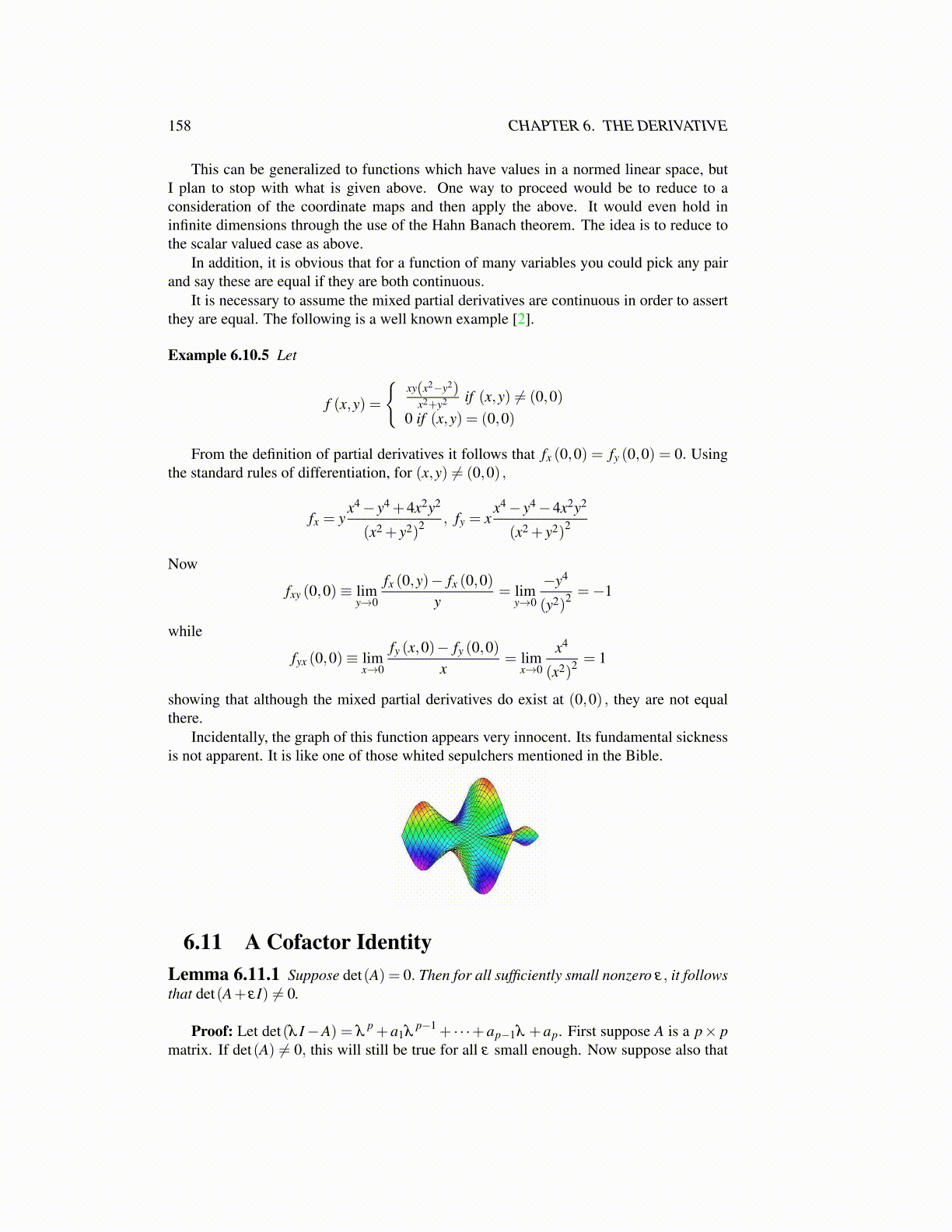
158 CHAPTER 6. THE DERIVATIVE
This can be generalized to functions which have values in a normed linear space, butI plan to stop with what is given above. One way to proceed would be to reduce to aconsideration of the coordinate maps and then apply the above. It would even hold ininfinite dimensions through the use of the Hahn Banach theorem. The idea is to reduce tothe scalar valued case as above.
In addition, it is obvious that for a function of many variables you could pick any pairand say these are equal if they are both continuous.
It is necessary to assume the mixed partial derivatives are continuous in order to assertthey are equal. The following is a well known example [2].
Example 6.10.5 Let
f (x,y) =
{xy(x2−y2)
x2+y2 if (x,y) ̸= (0,0)0 if (x,y) = (0,0)
From the definition of partial derivatives it follows that fx (0,0) = fy (0,0) = 0. Usingthe standard rules of differentiation, for (x,y) ̸= (0,0) ,
fx = yx4− y4 +4x2y2
(x2 + y2)2 , fy = xx4− y4−4x2y2
(x2 + y2)2
Now
fxy (0,0)≡ limy→0
fx (0,y)− fx (0,0)y
= limy→0
−y4
(y2)2 =−1
while
fyx (0,0)≡ limx→0
fy (x,0)− fy (0,0)x
= limx→0
x4
(x2)2 = 1
showing that although the mixed partial derivatives do exist at (0,0) , they are not equalthere.
Incidentally, the graph of this function appears very innocent. Its fundamental sicknessis not apparent. It is like one of those whited sepulchers mentioned in the Bible.
6.11 A Cofactor IdentityLemma 6.11.1 Suppose det(A) = 0. Then for all sufficiently small nonzero ε, it followsthat det(A+ εI) ̸= 0.
Proof: Let det(λ I−A) = λp +a1λ
p−1 + · · ·+ap−1λ +ap. First suppose A is a p× pmatrix. If det(A) ̸= 0, this will still be true for all ε small enough. Now suppose also that